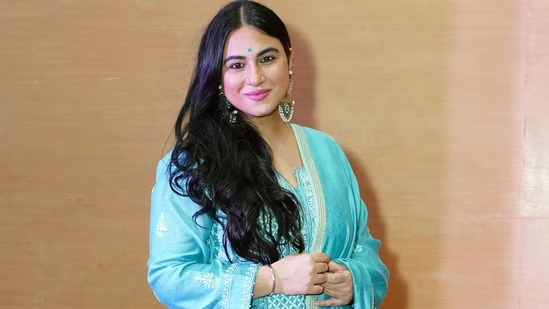By Arijit Bose
Mumbai: After five long years of relentless scrutiny, public vilification, and emotional turmoil, Rhea Chakraborty can finally breathe again. The Central Bureau of Investigation (CBI) has granted her a clean chit in the Sushant Singh Rajput case, finding no financial irregularities, no coercion, and no evidence linking her to the tragic demise of the late actor.
For Rhea, this is not just a moment of legal vindication — it is a reclaiming of her dignity, sanity, and sense of self. The past half-decade has seen her name dragged through mud, her family hounded, and her private life dissected on national television. But as the CBI’s exhaustive probe concludes, one truth emerges clearly from the noise: she was never the villain she was made out to be.
The findings reaffirm what Sushant himself had once believed — that Rhea was part of his family. Their bond, distorted by speculation and sensationalism, was built on affection, not animosity. Today, that belief stands vindicated not just emotionally, but judicially.
From Love to Lynch Mob: The Making of a Villain
To understand the gravity of this moment, one must revisit the day it all began.
On June 14, 2020, actor Sushant Singh Rajput was found dead in his Bandra apartment. The official verdict: suicide by hanging. But the tragedy quickly spiraled into a nationwide storm — a collision of grief, politics, and media hysteria.
Sushant, just 34, symbolized the dreamer’s journey — an engineering student from Patna who became a Bollywood star. His death came amid whispers of depression, industry nepotism, and career insecurities. But instead of empathy, the moment birthed outrage.
Within weeks, Sushant’s father, K.K. Singh, filed an FIR in Patna accusing Rhea of abetment to suicide, wrongful confinement, and siphoning off ₹15 crore from his son’s bank accounts. What followed was a jurisdictional tug-of-war between Bihar Police, Mumbai Police, and eventually the CBI. The Enforcement Directorate (ED) and Narcotics Control Bureau (NCB) soon entered the picture, turning one man’s death into a sprawling multi-agency investigation.
Rhea Chakraborty, then a 28-year-old actress known for her roles in Jalebi and Bank Chor, became the face of a presumed conspiracy. Arrested on September 8, 2020, for allegedly procuring drugs, she spent 28 days in Byculla Jail before the Bombay High Court granted her bail, calling the NCB’s case “prima facie illegal.”
But by then, her trial in the court of public opinion had already convicted her.
Trial by Media: The Nation’s Obsession
The Rhea Chakraborty saga was not just about justice — it was about how India consumes news in the digital age.
Major TV networks turned the tragedy into an entertainment event. Anchors screamed “murder” on primetime; hashtags like #ArrestRheaNow and #JusticeForSSR trended relentlessly. Her private chats were leaked, her character questioned, her outfits dissected for hidden meaning.
Channels such as Republic TV, Times Now, and News18 India ran nightly debates framing her as a manipulative outsider who destroyed a star. For weeks, her face was splashed across screens with captions like “The Black Widow of Bollywood.” Social media trolls amplified the frenzy, doxxing her family and issuing threats.
Even as Nitish Kumar’s government in Bihar used the case for electoral gain, the line between fact and fiction dissolved. The media trial, as experts later called it, was not an inquiry — it was a spectacle.
As Dia Mirza asked poignantly on Instagram, “Who in the media will apologize to Rhea and her family?”
The CBI Speaks: A Verdict Based on Evidence
After years of painstaking investigation, the CBI’s final report laid bare the facts — and none aligned with the conspiracy theories.
The report confirmed:
-
No financial misconduct was found. Every transaction between Rhea and Sushant was accounted for.
-
No evidence of abetment, coercion, or illegal confinement emerged.
-
No tampering was detected in the digital data exchanged between India and the U.S. via the Mutual Legal Assistance Treaty (MLAT).
-
No indication of foul play in the actor’s death, as corroborated by AIIMS’ forensic analysis and post-mortem reports.
Importantly, between June 8 and June 14, 2020, Rhea had left Sushant’s apartment — taking only her personal belongings. His sister Meetu Singh was with him in those final days. The claim that Rhea had “abandoned” him or “trapped” him was unsupported by any evidence.

Even Sushant’s flatmate Sidharth Pithani testified that Sushant referred to Rhea as “family.”
The Human Cost of Public Hatred
While the CBI’s closure restores her legal status, the damage inflicted upon Rhea and her family remains incalculable.
Her mother suffered from depression, her father faced verbal abuse outside their home, and her younger brother Showik Chakraborty was imprisoned for three months before being released on dropped charges.
For Rhea, it was a nightmare that blurred the line between personal loss and public persecution. “I wasn’t happy when the clean chit came,” she said in an interview this year. “Someone I loved deeply is gone. No verdict can bring him back. But maybe now, my parents can finally sleep.”
The News Broadcasting & Digital Standards Authority (NBDSA) later fined several channels for unethical coverage and misinformation. But the apologies never came. The damage — reputational, psychological, and professional — had already been done.
The Politics of Grief
The SSR case became a political lightning rod. Bihar’s government positioned itself as a crusader for “justice,” while opposition leaders accused it of exploiting tragedy for votes. Within Bollywood, the episode deepened existing divides — between insiders and outsiders, elite studios and self-made strugglers.
Even now, Sushant’s family rejects the CBI’s findings, calling them an “eyewash.” Their grief, though understandable, risks perpetuating the same cycle of speculation that once destroyed Rhea’s peace.
As Advocate Satish Maneshinde, Rhea’s counsel, remarked, “She endured untold miseries for no fault of hers. It took five years for truth to prevail — five years too late.”
Mental Health, Misogyny, and Media Accountability
Beyond the headlines, the clean chit reignites conversations that were once overshadowed — about mental health, misogyny, and media accountability.
Sushant’s battle with depression was real and documented. Yet, his death was quickly hijacked by sensationalism. The stigma around mental illness in the entertainment industry persists — even as NCRB data reveals rising suicide rates among young professionals, particularly in high-stress creative fields.
Rhea’s ordeal also reflected how society treats women associated with powerful men. She was slut-shamed, labeled manipulative, and stripped of agency — a narrative as old as patriarchy itself.
When she visited the Siddhivinayak Temple after the CBI report, softly saying “Ganpati Bappa Morya” to photographers, it symbolized quiet defiance — a woman reclaiming her faith, and her freedom.
On World Siblings Day 2025, she posted a picture with her brother Showik, captioned “Chapter 2 begins now.” The words resonated with thousands who had watched her transformation from scapegoat to survivor.
The Divide That Remains
Even now, the internet remains split. On X (formerly Twitter), users like @Amockx2022 hailed the closure as a “slap to godi media,” while others like @SachSynapse continued to question “inconsistencies.” The polarization persists — fact versus fury, empathy versus echo chambers.
But somewhere amid this digital divide, a quiet truth endures: Rhea Chakraborty was wronged.
Justice, Redemption, and Reflection
The CBI’s closure is more than a bureaucratic milestone — it is a societal mirror. It reflects how grief, when weaponized, can destroy lives; how misinformation, when monetized, can erode trust; and how justice, when delayed, still holds the power to heal.
For Rhea, it marks the end of a nightmare but not necessarily a return to normalcy. Her career remains stalled, and Bollywood’s cautious silence around her speaks volumes. Yet, the clean chit allows her to step forward — not as an accused, but as a survivor of one of the most vicious public trials in India’s modern media history.
For the rest of us, it’s a moment to introspect — about compassion, accountability, and restraint.
In the end, justice for Sushant Singh Rajput must also mean justice for Rhea Chakraborty. Because true justice is not about punishment; it’s about truth.
And now, at last, the truth has prevailed — setting Rhea Chakraborty free, and reminding an entire nation that every story deserves to be heard, patiently and without prejudice.






